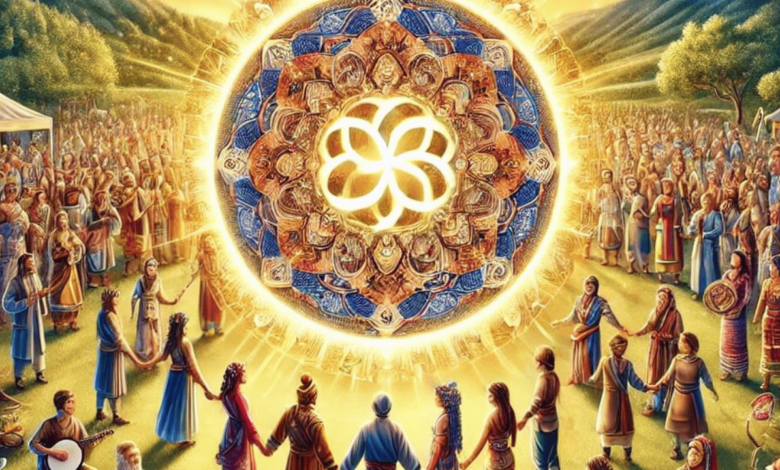Exploring the Cultural Significance of Âmni in Various Societies

Introduction
The concept of Âmni, often symbolizing spiritual unity and balance, permeates various cultures worldwide. This article delves into the profound cultural significance of Âmni, exploring how different societies interpret and integrate this concept into their traditions and daily lives.
The Origins of Âmni
1.1. Etymological Roots
The term “Âmni” is derived from ancient linguistic sources, suggesting a meaning intertwined with peace and harmony. Initially found in texts dating back several millennia, its use has evolved, but the essence remains unchanged.
1.2. Historical Context
Historically, Âmni was first referenced in the spiritual texts of an ancient civilization. Its portrayal in early artifacts and writings illustrates its role in rituals and community gatherings, symbolizing unity and spiritual alignment.
Âmni in Eastern Philosophies
2.1. Buddhism and Âmni
In Buddhist traditions, Âmni represents the ultimate state of enlightenment, a concept pivotal to achieving Nirvana. Monks often meditate on this principle, seeking inner peace and universal harmony.
2.2. Hinduism’s Embrace of Âmni
Hindu scriptures recount tales where Âmni symbolizes the convergence of the physical and spiritual realms. It is frequently depicted in the festivals and rituals celebrating the harmony of nature and humanity.
Âmni in Western Interpretations
3.1. Modern Philosophical Thought
In the West, Âmni is often interpreted through a philosophical lens, denoting a state of existential balance. Modern thinkers discuss Âmni in the context of achieving personal equilibrium amidst the chaos of daily life.
3.2. Cultural Celebrations
Western societies have adopted Âmni in various cultural festivals that honor peace and societal unity. These events serve as platforms for dialogue and understanding among diverse groups.
Societal Impact of Âmni
4.1. Community Cohesion
Communities that embrace the principles of Âmni often exhibit stronger bonds and a cooperative spirit. This section explores case studies of neighborhoods and societies transformed by their communal commitment to Âmni principles.
4.2. Conflict Resolution
Âmni is critical in mediating conflicts by fostering mutual respect and understanding. Various non-profit organizations have successfully implemented Âmni-based approaches to resolve disputes effectively.
Personal Reflections on Âmni
5.1. Individual Peace
Individuals often turn to Âmni for personal solace and balance. Testimonials from various people reveal how embracing Âmni has helped them overcome challenges and achieve a serene state of mind.
5.2. Lifestyle Changes
Adopting Âmni principles can lead to significant lifestyle changes. This section discusses how daily practices and mindfulness techniques centered around Âmni can enhance mental and physical well-being.
Conclusion
Exploring Âmni’s cultural significance reveals its universal appeal and transformative power across societies. As a symbol of peace and balance, Âmni continues to inspire a collective journey towards harmony and understanding.
FAQs about Âmni
What does Âmni mean?
Âmni symbolizes spiritual unity and balance, often associated with peace and harmony within oneself and the community.
How is Âmni used in modern society?
In contemporary contexts, Âmni is integrated into cultural festivals, personal meditation practices, and community-building activities to foster peace and understanding.
Can embracing Âmni lead to personal well-being?
Many individuals report that incorporating Âmni principles into their daily lives has improved mental health and overall well-being.
Are there specific rituals associated with Âmni?
While specific rituals can vary widely, many involve meditative practices, community gatherings, or peace-promoting ceremonies that focus on the concept of Âmni.
How can communities benefit from adopting Âmni principles?
Communities that embrace Âmni often experience enhanced cohesion, reduced conflicts, and a stronger sense of shared purpose and harmony.



